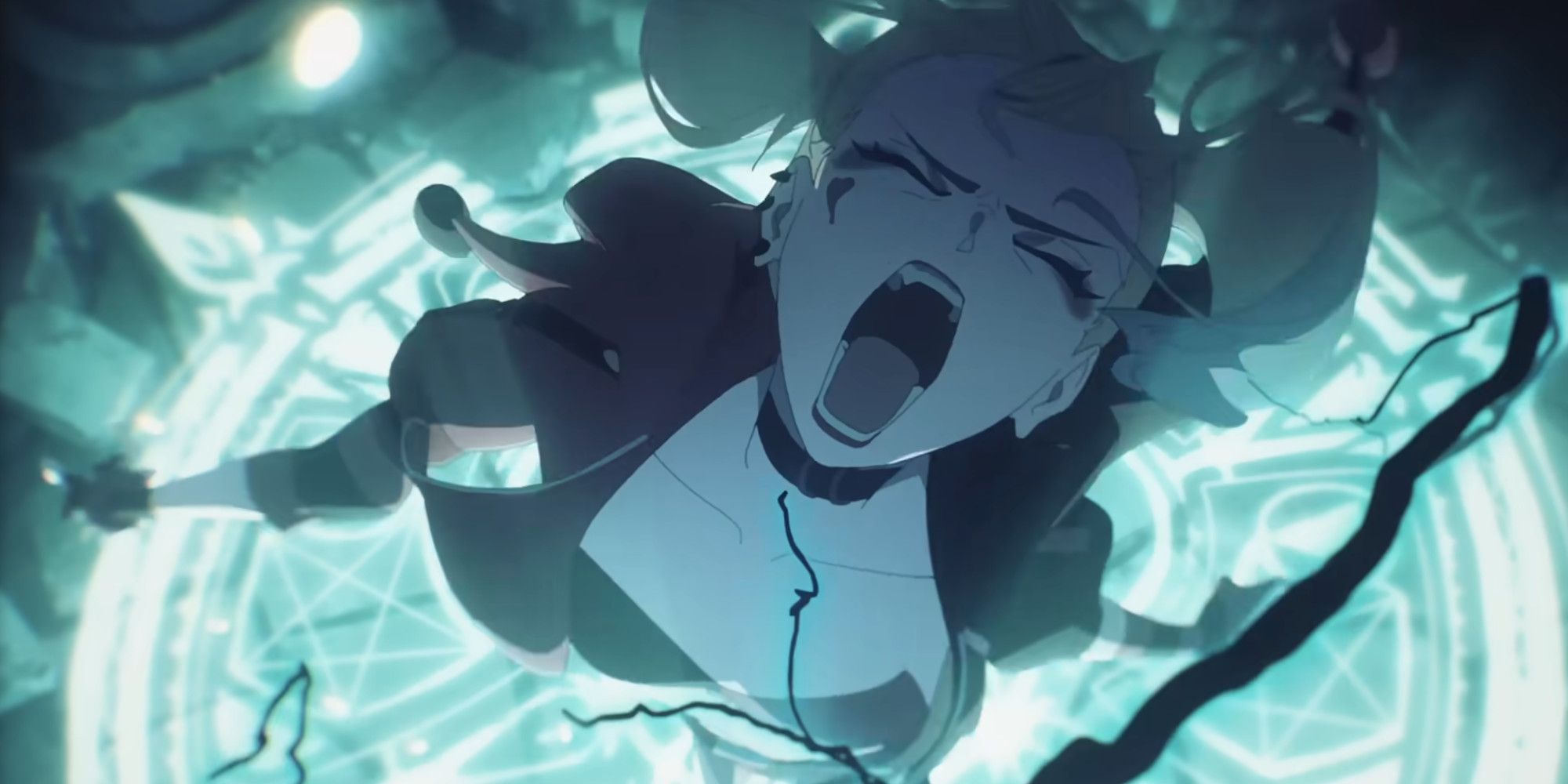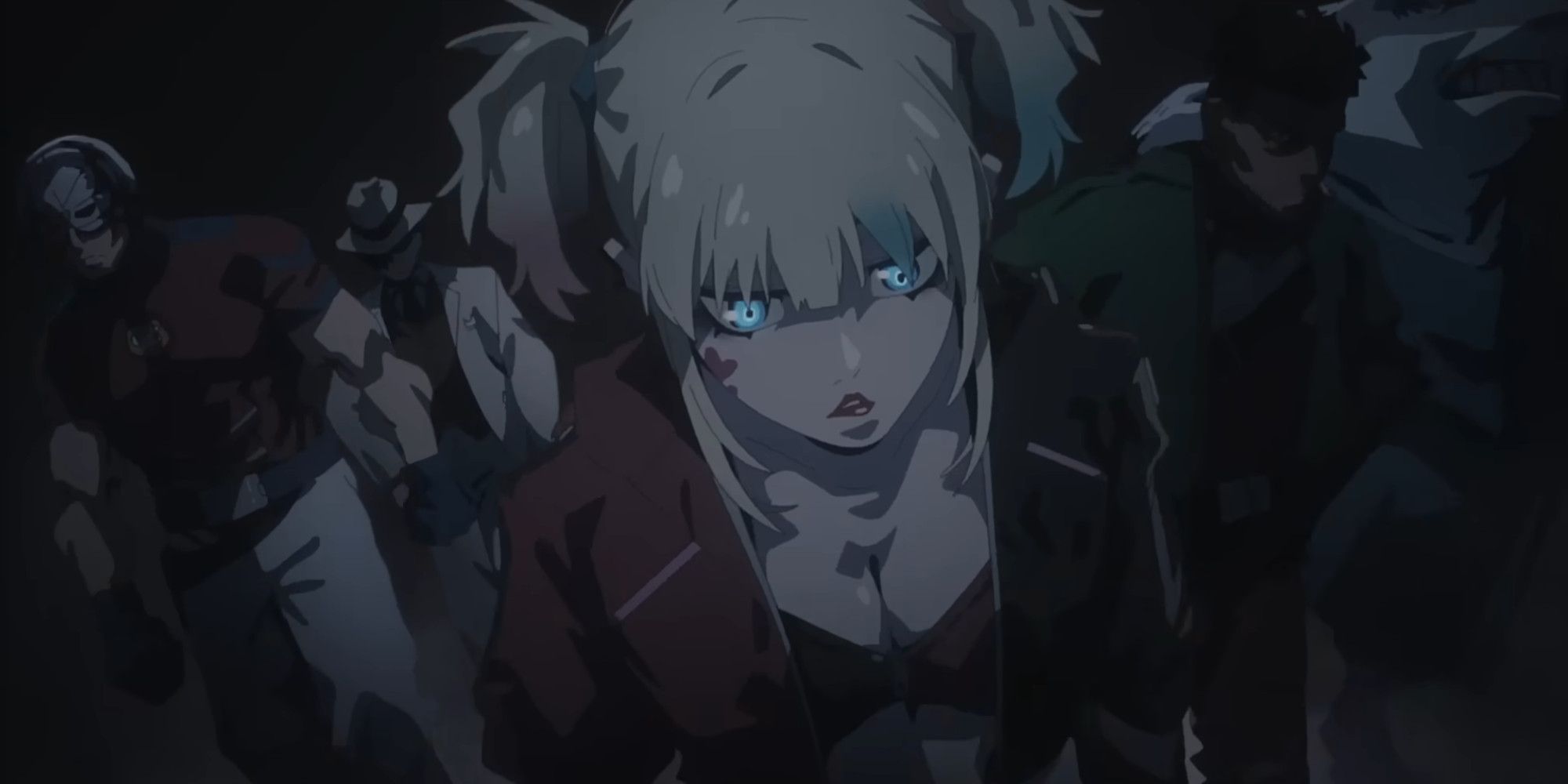Highlights
- Suicide Squad Isekai’s opening is visually stunning, featuring dark atmospheres, detailed animation, and raw artwork.
- Director Takuji Miyamoto’s unique style, including expressive character animation and dynamic angles, sets the opening apart.
- The opening sequence showcases Miyamoto’s artistic freedom and potential for future projects, raising anticipation for the series.
|
Title |
Suicide Squad ISEKAI |
|
Director |
Eri Osada |
|
Studio |
WIT Studio |
|
Premiere Date |
6/27/2024 (Advance Release) 7/6/2024 (Premiere) |
It’s not uncommon for an opening title sequence to be the best-looking part of an anime, and the qualities of a good OP can sometimes demand that it be graded on a separate scale altogether. Whether the OP itself is a fitting representation of the work to which it is attached is another matter, but regardless, Suicide Squad Isekai‘s OP is killer, and that’s in large part to its director.
Suicide Squad Isekai is a 2024 anime original series directed by Jujutsu Kaisen Season 1 animator Eri Osada and animated by WIT Studio (Attack on Titan, Ranking of Kings, Great Pretender). It follows the titular Suicide Squad being sent on a peacekeeping mission to another world, with only 72 hours to complete their assignment before the bombs in their necks explode.
Related
Summer 2024 Preview: Suicide Squad ISEKAI
The only hope for a magical parallel world is the supervillains from our world, which doesn’t bode well for either if we’re honest.
Dissecting Suicide Squad Isekai’s Opening
For a brand as characteristically bombastic as this one, the OP starts with a fair degree of foreboding, dripping with atmosphere, to say nothing of the rain pouring down from the night sky. In contrast to the sun-drenched fantasy realm shown in the previews, which itself is a contrast to the characters’ usual surroundings, the OP is dark and constantly under the cover of night.
What light that does exist bathes the characters beautifully. During these close-ups, the animation moves slowly and smoothly, exaggerating the slightest movements in ways that accentuate the characters’ qualities, be they monstrous or beautiful. At the halfway point, after the camera closes in on Enchantress’ emerald eyes or Joker’s sinister grin with similarly laborious detail, the theme shifts gears entirely.
Dragons & Witches & Supervillains, Oh My!
The best way to describe what makes this sequence cool is just how raw the artwork is, something illustrated quite thoroughly by the dragon. Despite – and admittedly, because of – the rough line art comprising the dragon, it manages to create a creepy and incredibly cool silhouette, with the fire building up in its throat serving as the drop for the musical theme. As soon as this behemoth breathes fire, the real action begins.
Suicide Squad Isekai‘s OP operates at two speeds. First, the aforementioned slow-motion close-ups and panning shots with subtle movements. These add a surprising amount of character, from flowing hair/fur to the most minor twitches. Second – and certainly more sparse – are moments of fast and frenetic action. Seeing Harley, Flag, Shark, and Deadshot running like hell across a battlefield looks cool on its own, but there’s a lot of personality to how each character runs.
Flag has the best form and looks to his side to check on Deadshot, who stumbles. Meanwhile, Harley tries to pick up speed like it’s a race, and the whole time, King Shark is struggling to get a bag off of his head before waving his arms wildly to prevent himself from falling. It looks cool, but above all, it’s funny and conveys the tone in ways that a less raw art style might have struggled to convey with the same degree of expressiveness.
Why Does It Look This Good?
At first glance, one might look at this OP and compare it to that of Jujutsu Kaisen‘s title sequences – especially Season 1. Both shows’ OPs are notable for the amount of detail, the gorgeous but moody lighting, and the lifelike (or otherwise expressive) character animation. But whereas Jujutsu Kaisen‘s OPs were directed by Shingo Yamashita, who also directed Chainsaw Man‘s OP, Suicide Squad Isekai‘s is the work of one Takuji Miyamoto.
Miyamoto has been an animator on such shows as My Hero Academia, Jujutsu Kaisen, and Mob Psycho 100, but he’s particularly notable for his work on anime OPs. He was a key animator on both OPs of My Hero Academia Season 3, including this amazing cut of All Might facing off against One for All (see here). More significantly, he directed and storyboarded OPs for The Rising of the Shield Hero and Jujutsu Kaisen‘s mobile game, Phantom Parade.
Miyamoto’s Trademarks
While he hasn’t directed too many title sequences, it doesn’t take long to notice what kinds of shots Miyamoto likes. That aforementioned running sequence is a shot he’s done in both Shield Hero and Phantom Parade, albeit with not nearly as much chaos. Plus, when it comes to more relaxed, atmospheric glamor shots of the characters – which are a staple of anime OPs – the rain in Suicide Squad Isekai‘s OP harkens back to the same from Shield Hero.
Regardless of the project, Miyamoto loves framing characters from extreme highs or extreme lows to flex the characters’ expressiveness from dynamic angles. However, Suicide Squad Isekai stands as perhaps his best work yet, and all the more reason why Miyamoto needs to be given the chance to direct more. While he’s used these techniques before, he’s never been allowed to illustrate characters with this level of freedom.
In Defense of “Rough” Line Art
Throughout this analysis, the word “raw” keeps coming up and, for lack of a better term, that’s what makes Miyamoto’s art stand out. It’s weird in the absolute best way, and perhaps the best example of this comes from the sequence he directed for 2018’s Batman Ninja. Before the film’s climax, there is a prolonged sequence that breaks from the CGI that had dominated the art direction and instead opts for an almost painted look.
The scene follows Red Hood attacking who he believes to be the Joker and Harley in disguise until Batman intervenes. It’s a bizarre, surreal, and at times heavily abstract scene, the style of which could have made for an entire film in itself. At one point, a gun goes off, and the way it is visualized tricks the audience into briefly thinking that the Joker was shot. It’s one of the tensest scenes in the film and one of the best overall, all thanks to the artwork.
It’s funny that his next most expressive contribution to the medium has also been a DC-related property, but hopefully, he can be given this level of artistic freedom more going forward. Suicide Squad Isekai is a peculiar series in concept alone, and while fans wait to see how the show will live up to expectations, this opening has no doubt piqued a lot of people’s interest. Remember Takuji Miyamoto, because he might just direct your favorite OP a year from now.
Suicide Squad Isekai
- Release Date
- June 27, 2024
- Studio
- Wit Studio
- Number of Episodes
- 10
- Streaming Service(s)
- Max , Hulu , Disney+



